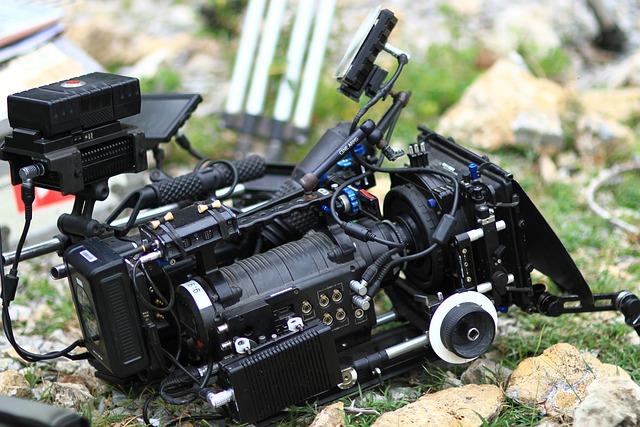In the shadowy world of cinema, where dreams flicker to life on the silver screen, the writing process stands as both a beacon and a labyrinth. From the first glimmers of inspiration to the final polished script, the journey of a screenplay is one of constant evolution. As the camera rolls and directors call “action,” the written word transforms, adapting to the ever-shifting landscape of creativity, collaboration, and constraint. This article delves into the dynamic metamorphosis of screenwriting throughout film production, exploring how each stage—pre-production, shooting, and post-production—reshapes the narrative tapestry, weaving in new ideas while unraveling others. Join us as we uncover the intricate dance between pen and lens, where storytelling finds its cinematic soul.
Crafting the Blueprint: From Script to Screen
The journey from a script’s inception to its final cut is a dynamic dance of creativity and collaboration. Screenwriters initially lay the groundwork with a script that captures the essence of the story. As production begins, this blueprint is continually refined, evolving with input from directors, actors, and even the set itself. Each scene becomes a living organism, adapting to the realities of filming, such as location changes or unexpected challenges.
- Director’s Vision: Directors interpret the script, infusing it with their unique perspective, which can lead to rewrites that enhance the narrative’s visual storytelling.
- Actor Input: Actors often bring fresh insights into their characters, prompting adjustments in dialogue or actions to better reflect the character’s journey.
- On-set Realities: Practical constraints, like weather or budget, may necessitate creative script changes to maintain the story’s flow.
Throughout this process, the script remains a guiding force, yet it flexes to accommodate the collaborative nature of filmmaking, ensuring the final product resonates with authenticity and impact.
Collaborative Creativity: Navigating Rewrites and Revisions
In the dynamic world of film production, the script is often a living document, evolving as it journeys from page to screen. Collaborative creativity plays a pivotal role in this transformation, as each member of the production team brings their unique perspective to the table. Directors, actors, and producers all contribute to the script’s evolution, leading to rewrites and revisions that enhance the story’s depth and resonance. This process requires an open mind and a willingness to embrace change, as initial drafts may undergo significant modifications to better align with the director’s vision or the actors’ interpretations.
- Director’s Input: Adjustments for visual storytelling and pacing.
- Actors’ Contributions: Dialogue tweaks for authenticity and character development.
- Producer’s Perspective: Practical changes for budget and logistical considerations.
Through this collaborative synergy, the script is refined and polished, ensuring that the final product resonates with audiences. The process is not just about fixing what doesn’t work, but also about discovering new possibilities that enhance the narrative. It’s a testament to the power of teamwork, where each contribution is valued and the collective creativity of the team leads to a richer, more compelling story.

Adapting to the Unexpected: Embracing On-Set Changes
In the dynamic world of film production, the script is often seen as a living document. Changes are inevitable and can arise from a variety of sources—be it location constraints, budget adjustments, or unexpected actor availability. This flexibility allows the creative process to thrive, turning potential obstacles into opportunities for innovation. Writers and directors must remain open-minded, ready to embrace these shifts and integrate them seamlessly into the narrative.
Adapting on-set requires a keen sense of collaboration and quick thinking. Key strategies include:
- Collaborative brainstorming: Gather the team to explore new ideas and solutions.
- Improvisation: Encourage actors to experiment with dialogue to find what fits naturally.
- Scene restructuring: Modify scenes to better suit the new circumstances.
By fostering an environment where change is welcomed, the production not only survives the unexpected but can often emerge with a more enriched and authentic story.

Polishing the Final Draft: Post-Production Refinements
In the film production journey, refining the final draft is akin to sculpting a masterpiece from raw material. During post-production, the script undergoes meticulous adjustments to align with the visual narrative. Dialogue is sharpened to match the actors’ performances, ensuring that every word resonates with authenticity and emotion. This phase is crucial for synchronizing the script with the film’s final edits, where even minor tweaks can significantly enhance the storytelling.
- Visual Consistency: Aligning scenes with the director’s vision.
- Character Depth: Enhancing arcs to ensure emotional payoff.
- Rhythmic Flow: Adjusting pacing for seamless transitions.
Collaborative efforts among writers, directors, and editors are essential. They gather in brainstorming sessions, wielding both creativity and precision to polish the narrative. The script evolves, reflecting the film’s heartbeat, and ultimately ensuring that the final product is not just seen, but felt deeply by the audience.

